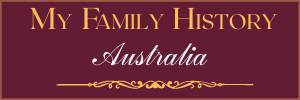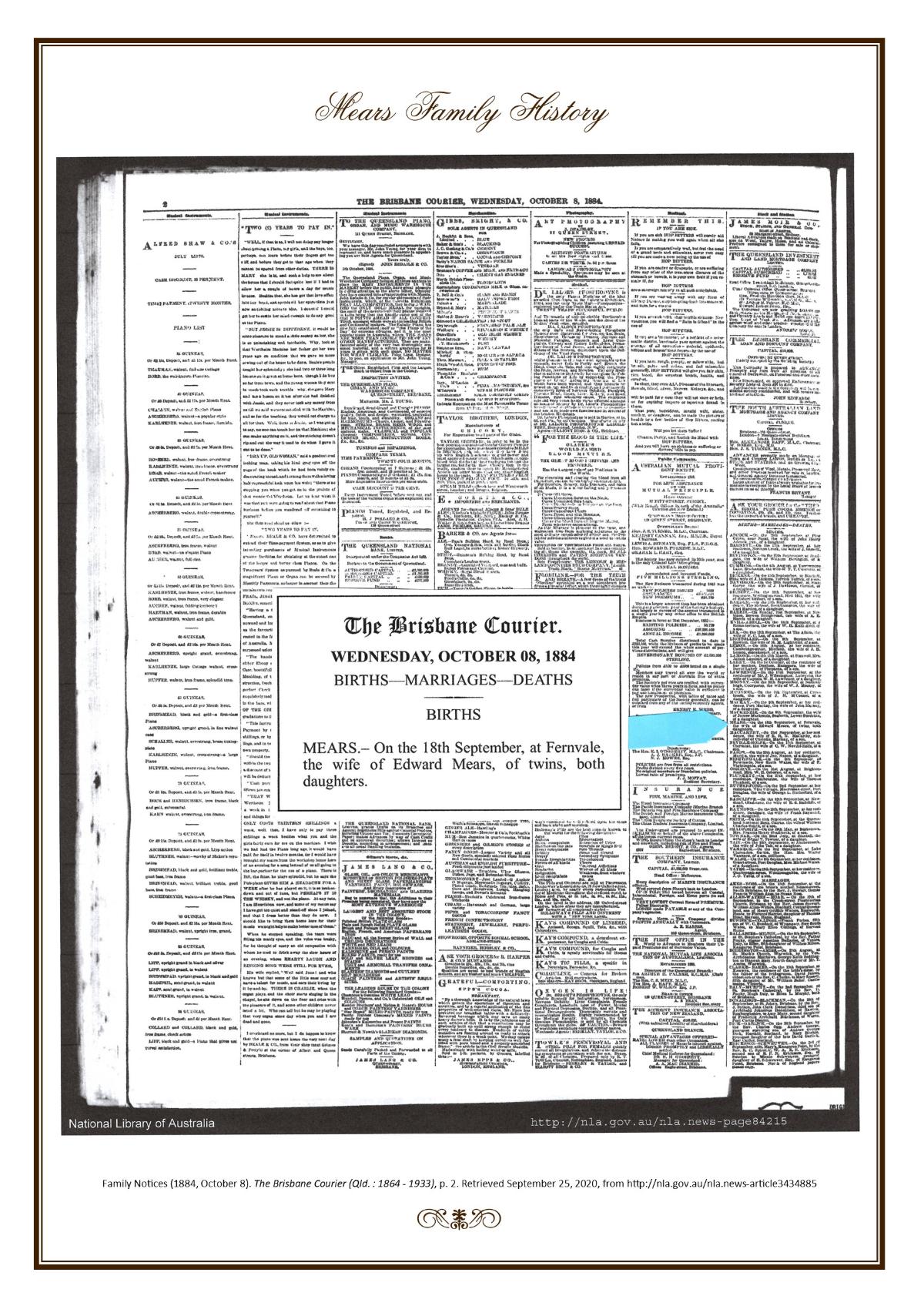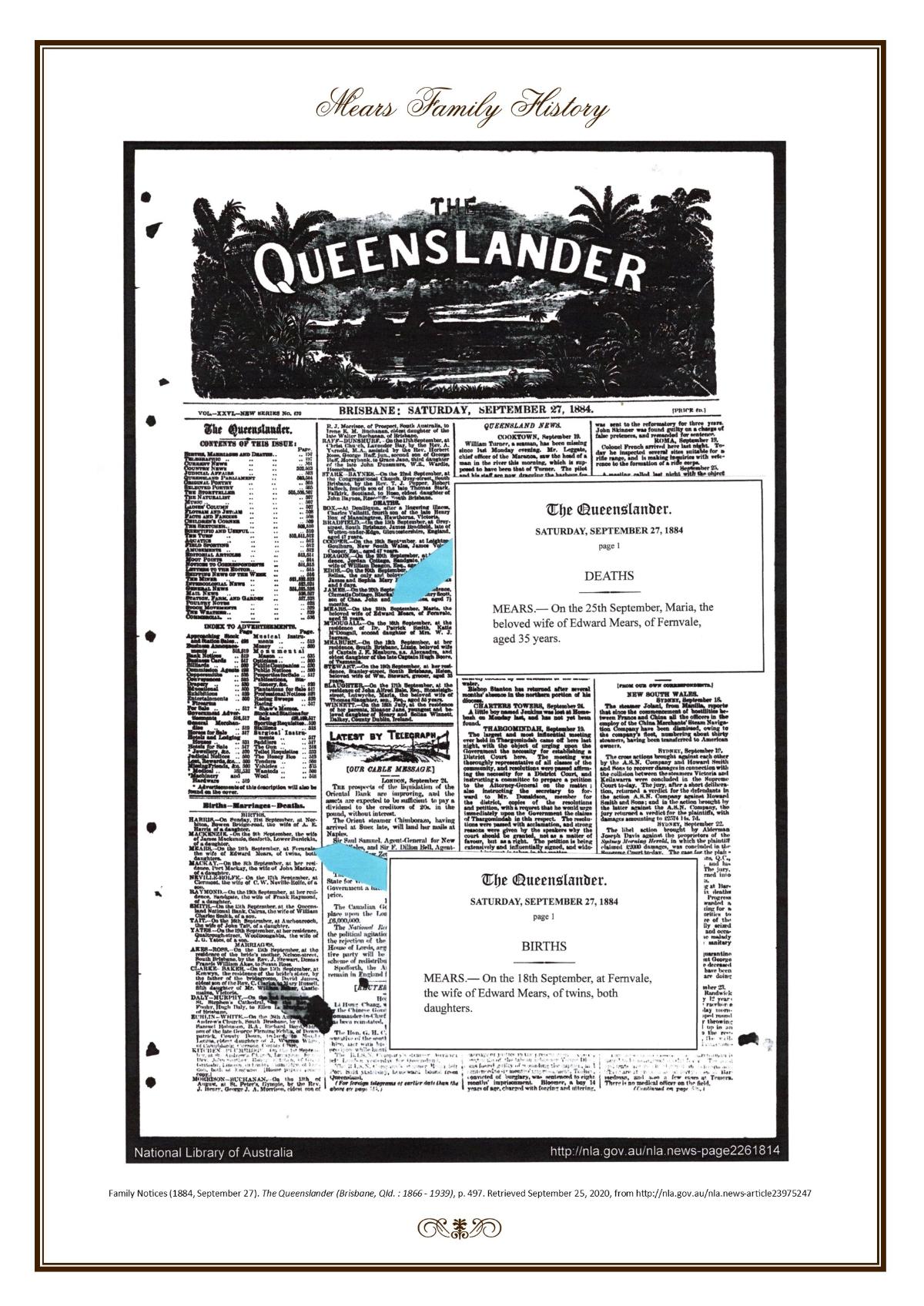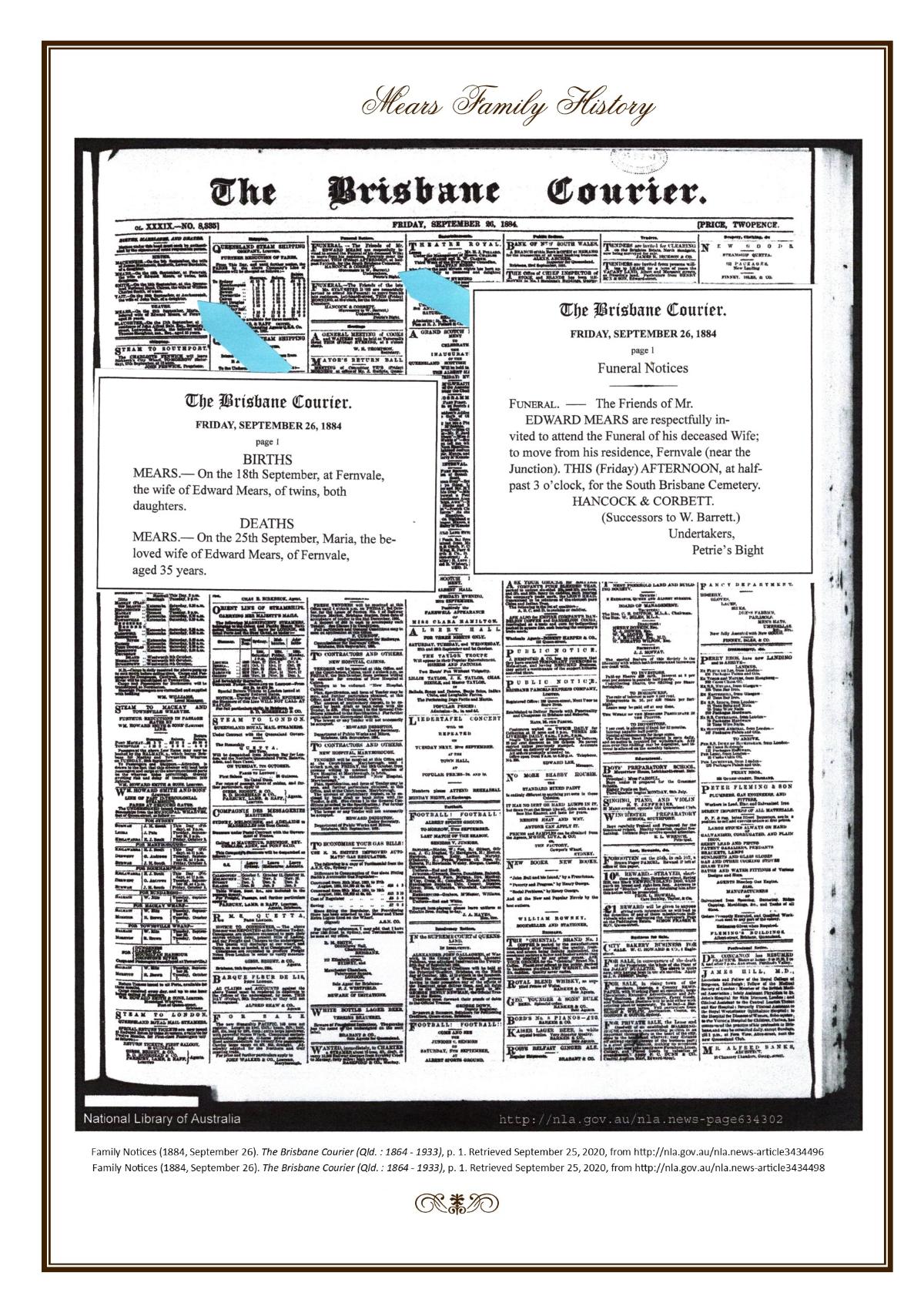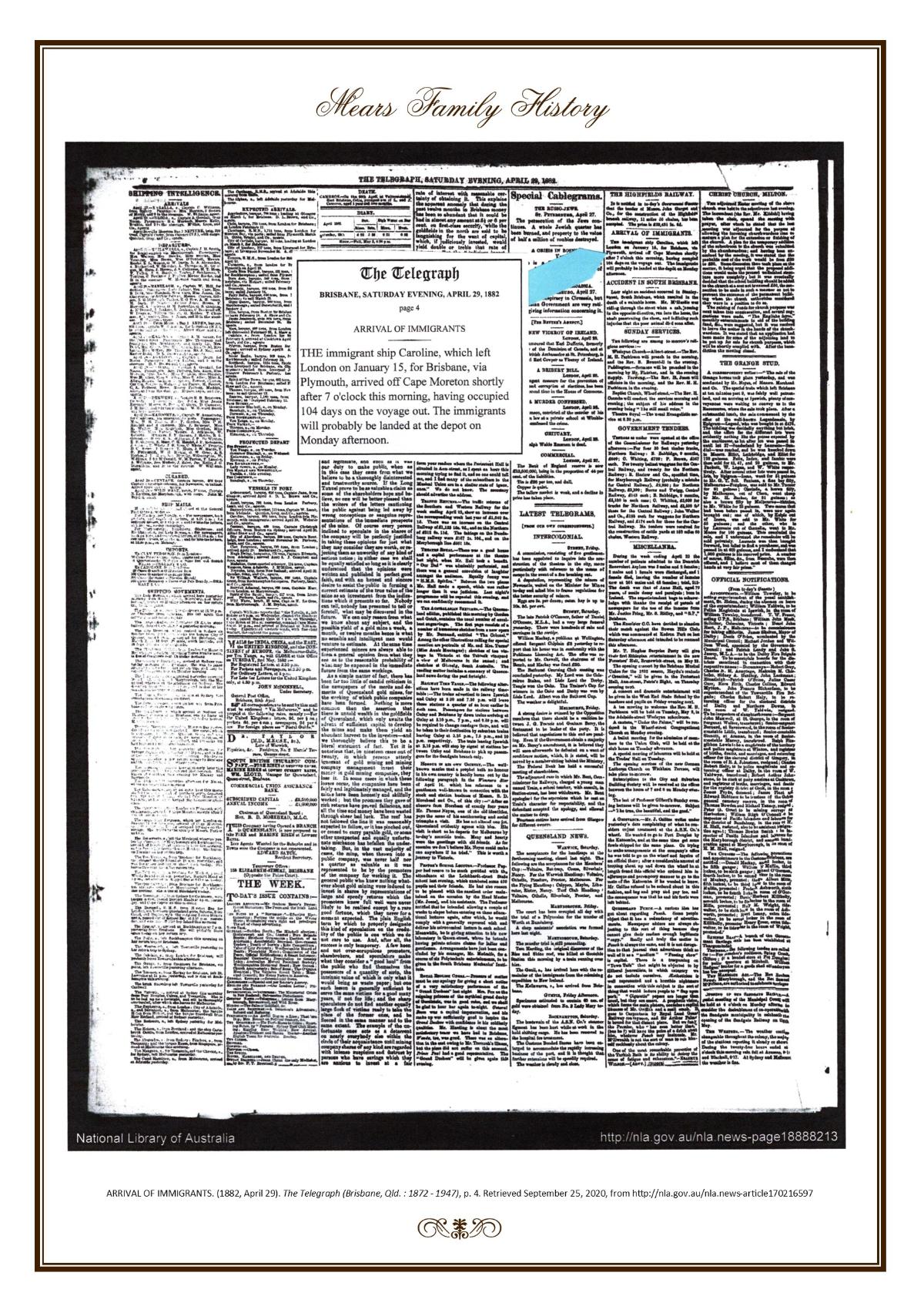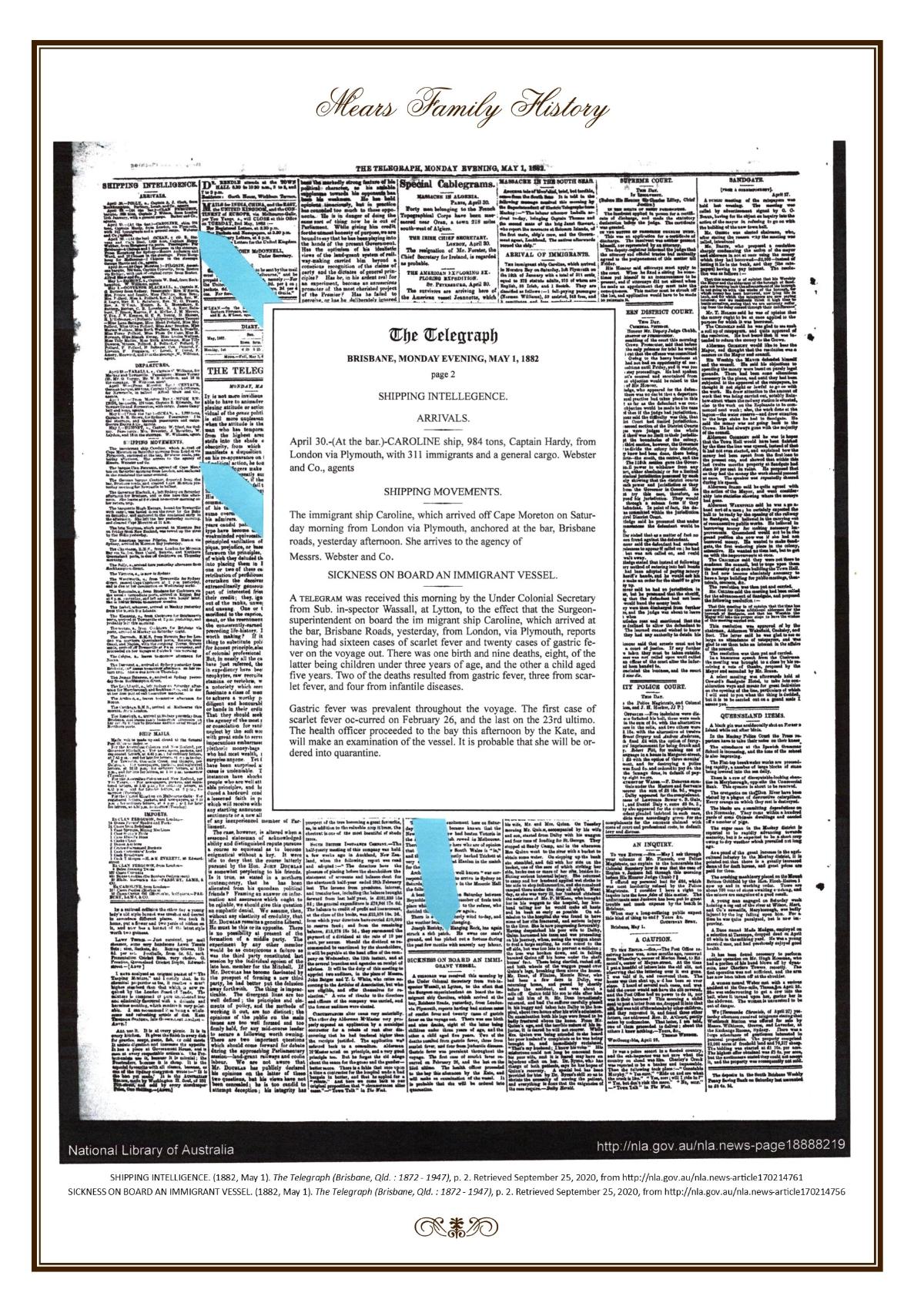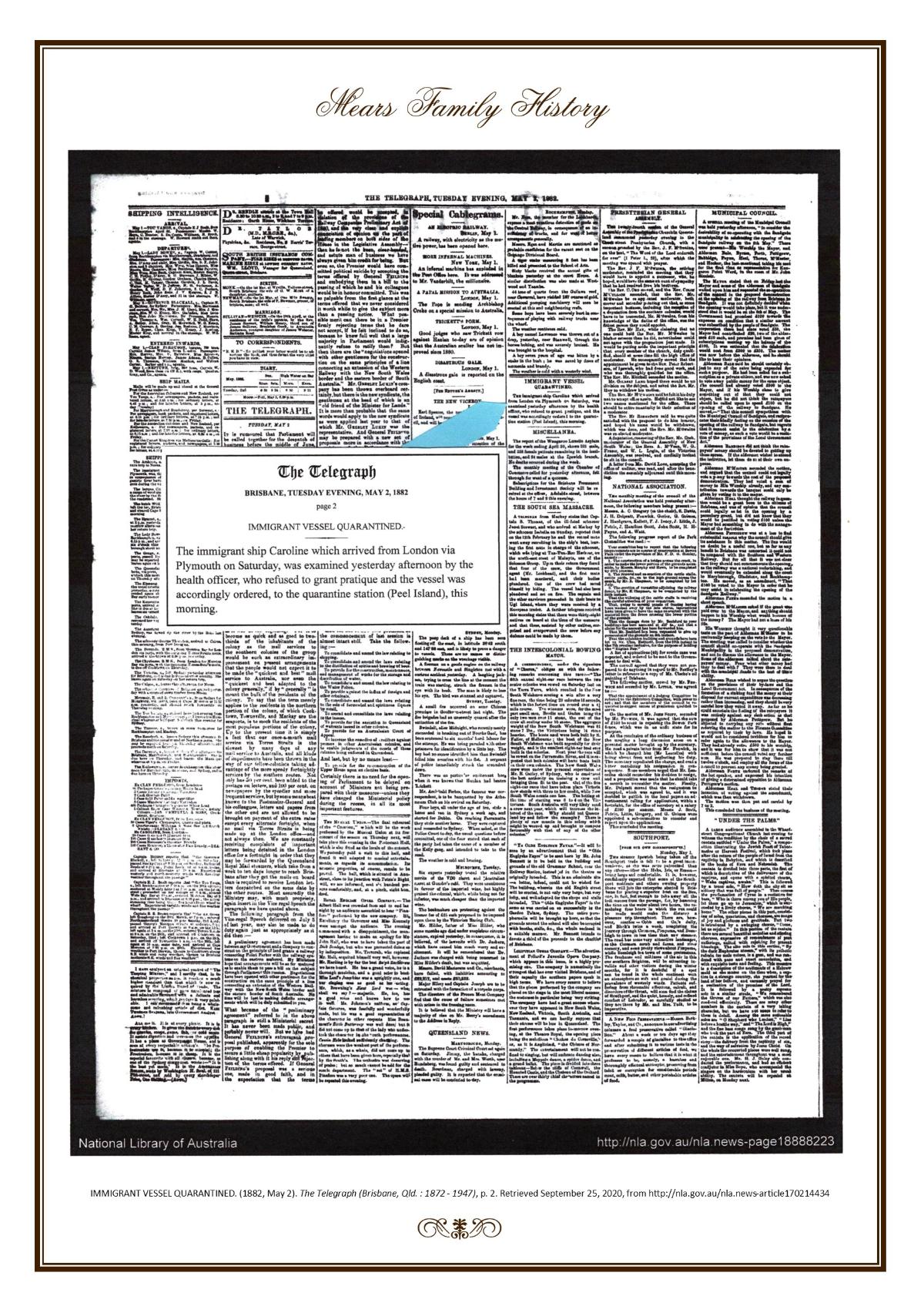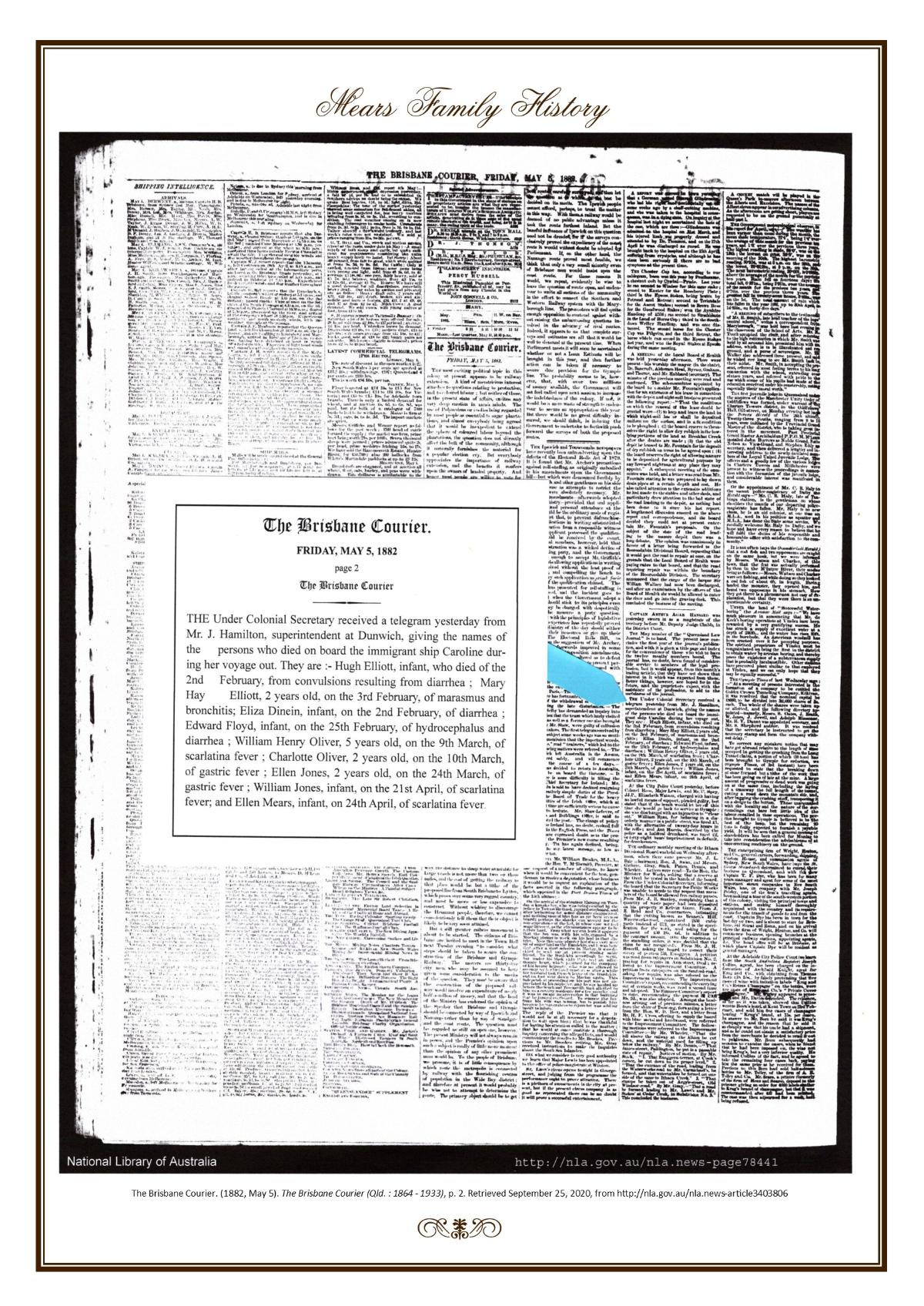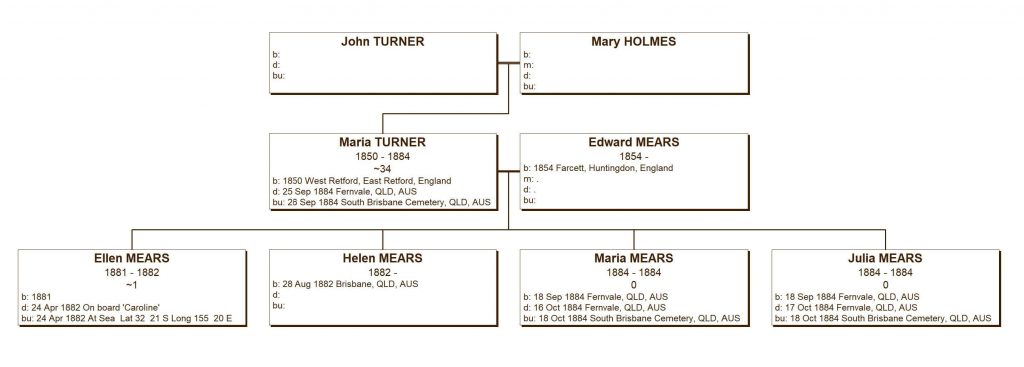Historic Newspaper Articles
Purpose
Newspaper articles provide crucial and often unexpected information during family history research.
The Selection of Newspaper articles below are from the Mears Family History. The articles from 1882 -1884 tell a story, previously unknown to the family, of their English ancestors’ hardships on the journey to Fernvale in Queensland.
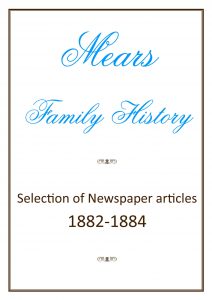 Background
Background
This story begins one hundred and thirty-five years ago with a newspaper article announcing the birth of twin girls on 18th September, at Fernvale, as reported in The Brisbane Courier, Wednesday, October 8th, 1884.
Mears Family History
Born the same year Fernvale railway station opened, as part of the new Ipswich-Lowood line, these little girls would have a short life. As part of Fernvale’s early history, we will explore their Family History, learn about their ancestors, and discover their heritage. We will see how one birth notice, just sixteen words in length, provides enough information to start the journey into a rich and interesting Family History.
We follow the MEARS Family History in the same order that the research discovers their heritage. As a result, the records do not appear in chronological order – instead, they show how evidence is gathered from a variety of sources, as the need arises, continually bringing in new information that shapes the MEARS Family History.
Edward MEARS is the only name we find in the article. The twins are not named and incidentally neither is their mother. So, the first step is to find those extra names. We have a name and a place, so we began researching.
Who was “the wife of Edward Mears” and what is her story?
Process
My Family History Australia services used to achieve the outcome:
- Old newspaper searches
- Online searches
- Research for four generations
- Transcriptions of census records, passenger lists and birth, death and marriage records.
Outcome
Newspaper articles provided crucial information when researching the Mears family story.
Maria Turner was born in 1850 in West Retford, England. She married Edward Mears in 1879 before stepping on aboard the ‘Caroline’ in 1882. Just two years later in 1884, Maria died in Fernvale, Queensland as the result of an infection from childbirth.
When this research began Maria and her twin girls lay in an unmarked grave in the South Brisbane Cemetery. By discovering their heritage and their family history; their lives are remembered, their graves are visited and eventually their grave will have a headstone.
We are extremely fortunate that the National Library of Australia provides free, online, digitised access to historical newspapers. Research allows us to discover our heritage, connect with ancestors and honour their memory.
